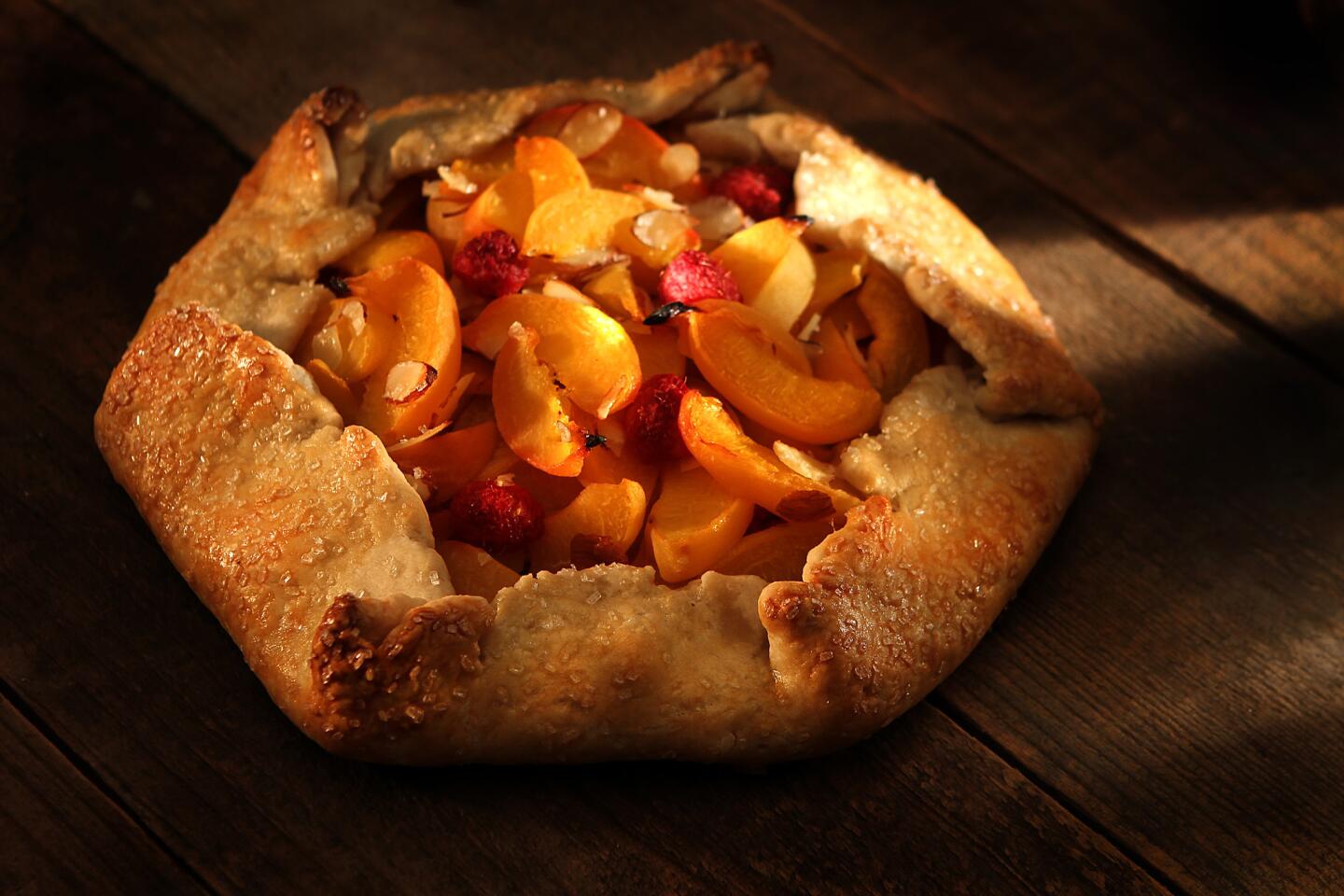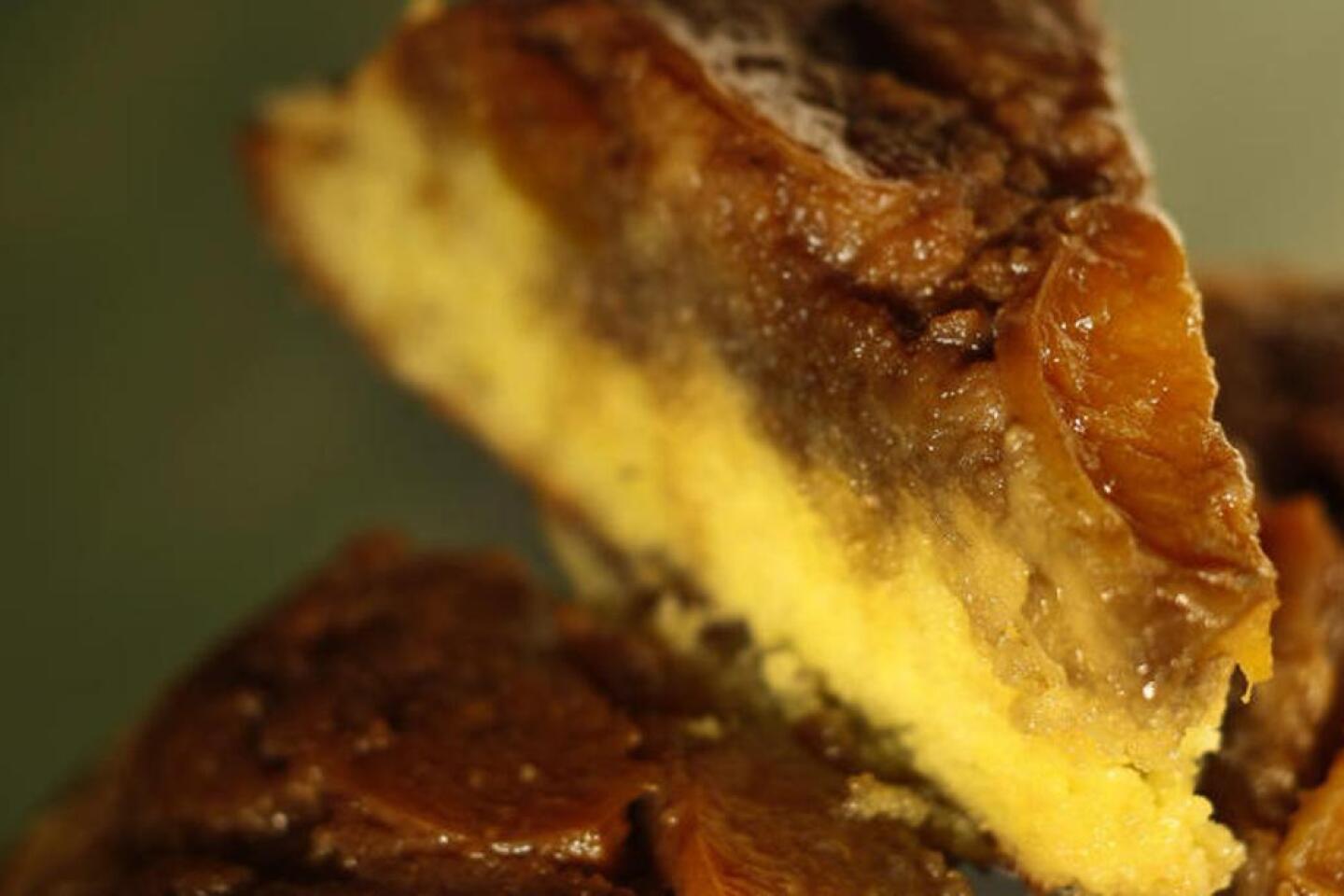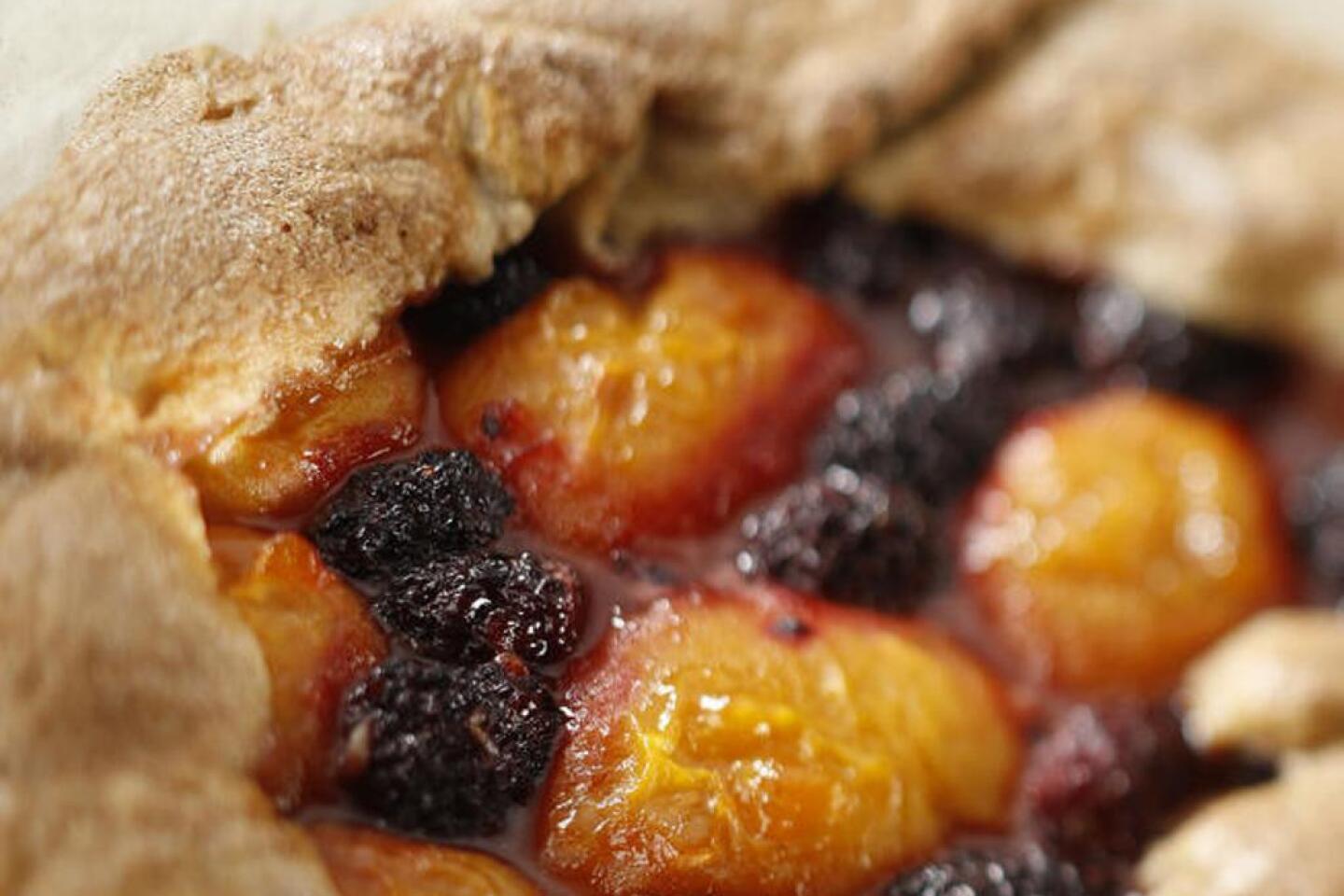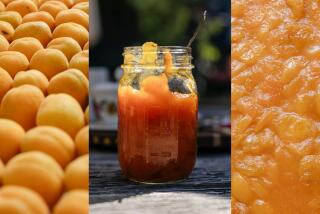Buy this now: Apricots and their kin, with 12 recipes
- Share via
For many years now, fresh apricots have been a love/hate fruit. Almost all of the ones you’ll find at supermarkets or farmers markets are bland and mealy, grown more for drying and canning than for eating fresh. But then there’s the cult of the Royal/Blenheim: those tiny, difficult-to-grow heirloom apricots, some of the best coming from 100-year-old trees around Ojai.
But in the last 10 to 15 years, new varieties of apricot-plum crosses have been developed that offer something approaching true apricot flavor and texture. These are called, variously, apriums, plumcots or pluots, depending on their exact lineage and the whims of fruit breeders.
When they’re good, they’re very good -- and even better, the good ones can be found much more frequently than apricots. The indispensable David Karp ranked his favorites a few years ago, preferring Flavorellas and CandyCots. He also favored GoldenSweet, Royal/Blenheims and Robada true apricots as well.
As with any stone fruit -- peaches, plums, nectarines -- apricots will continue to ripen after they’re harvested. So if you get some that are a little firm, leave them at room temperature for a day or two and they’ll soften. Check a couple of times a day, as they may ripen more quickly than you expect.
How to choose: Look for firm fruit that gives slightly under light pressure. The peels should be smooth and unblemished, and the color should be deep and vibrant.
How to store: Keep apricots at room temperature on the kitchen counter until they’re ripe. Once the fruit is fully ripe, refrigerate it in a tightly sealed plastic bag. They’ll last at least a week.
Are you a food geek? Follow me on Twitter @russ_parsons1.
More to Read
Eat your way across L.A.
Get our weekly Tasting Notes newsletter for reviews, news and more.
You may occasionally receive promotional content from the Los Angeles Times.

















